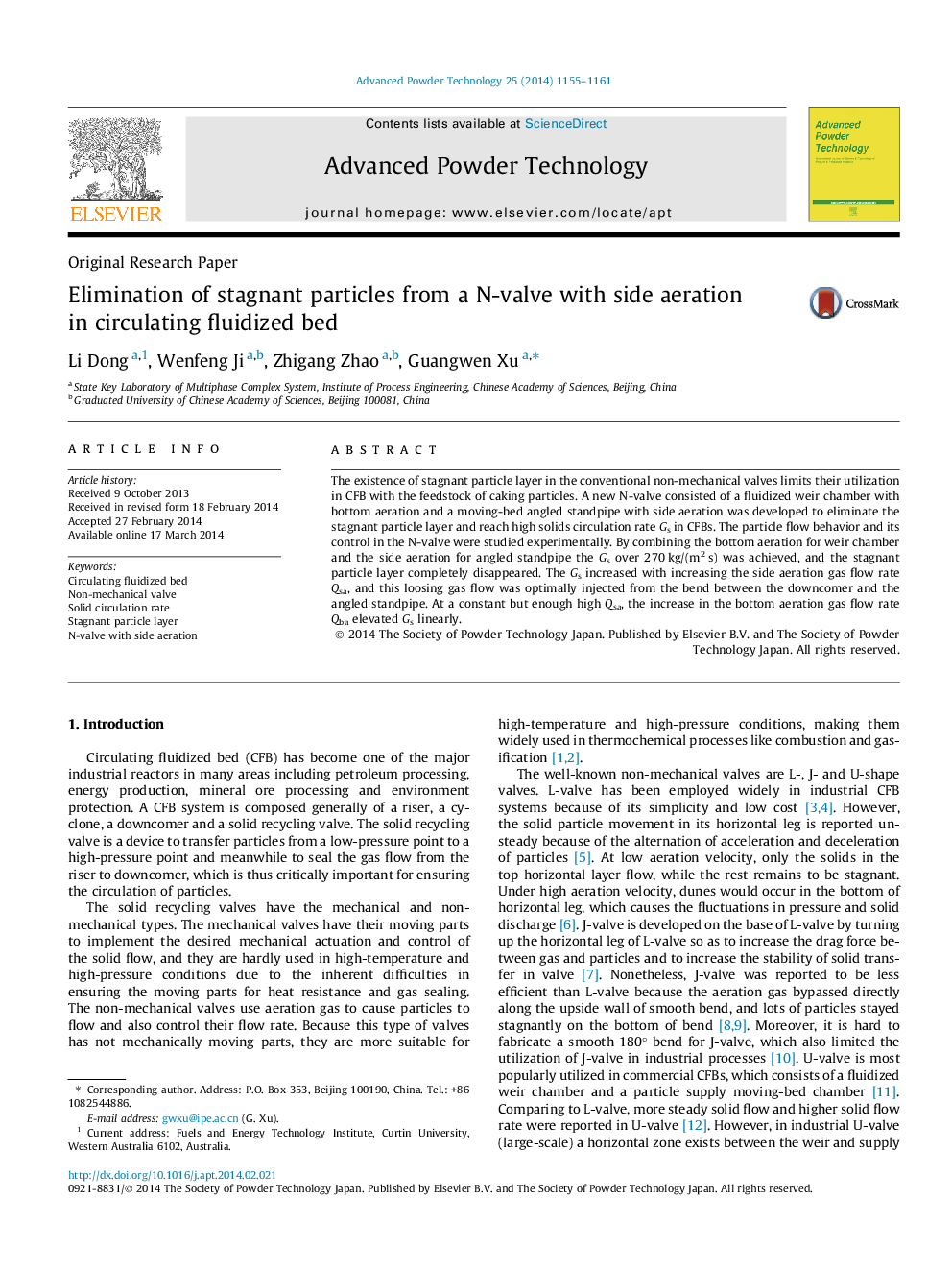| Article ID | Journal | Published Year | Pages | File Type |
|---|---|---|---|---|
| 144878 | Advanced Powder Technology | 2014 | 7 Pages |
•A new N-valve was demonstrated to eliminate the stagnant particle layers in the solid recycling valve of CFB system.•The stagnant particle layer of N-valve can eliminate completely when the angled standpipe is θ ⩾ 45°.•High particle circulation rate Gs could be realized by using the new N-valve with side aeration in angled standpipe.•Gs increased with raising the side aeration flow rate Usa/Umf and the bottom aeration rate Uba/Umf.
The existence of stagnant particle layer in the conventional non-mechanical valves limits their utilization in CFB with the feedstock of caking particles. A new N-valve consisted of a fluidized weir chamber with bottom aeration and a moving-bed angled standpipe with side aeration was developed to eliminate the stagnant particle layer and reach high solids circulation rate Gs in CFBs. The particle flow behavior and its control in the N-valve were studied experimentally. By combining the bottom aeration for weir chamber and the side aeration for angled standpipe the Gs over 270 kg/(m2 s) was achieved, and the stagnant particle layer completely disappeared. The Gs increased with increasing the side aeration gas flow rate Qsa, and this loosing gas flow was optimally injected from the bend between the downcomer and the angled standpipe. At a constant but enough high Qsa, the increase in the bottom aeration gas flow rate Qba elevated Gs linearly.
Graphical abstractIt is challenging to use particles with certain caking propensity like caking coal in CFBs because of stagnant particle layer in the conventional non-mechnical solid recycling valves. In this article a new N-valve was selected and optimized in terms of configuration and side aerations to completely eliminate the possible stagnant particle layer existing in the valve so that it is adaptive to the CFB treating caking particles.Figure optionsDownload full-size imageDownload as PowerPoint slide
